The Great Ocean Road is a famous Australian National Heritage Site. It was built by soldiers returning from WW1 and is dedicated to all those who were killed during WW1. Starting in Torquay, the 243 kilometres road makes this the world’s largest war memorial, winding through various terrain such as rainforests, beaches and steep cliffs composed of limestone and sandstone. The road connected then isolated settlements along the coast and became a vital transport link for both the timber industry and tourism.
Beginning in Torquay we had some trouble trying to find our accommodation. We found the correct road then drove the full length until we reached an area that said road closed without finding our booked accommodation. By this point hunger had set in so we parked up and decided to find the tourist information office and a café for lunch. At the tourist information office, a trek from the main town, they kindly informed us that our booking was for a different Torquay! Turns out that in addition to the Torquay in the UK there are two Torquays in Australia.
After a frustrating visit to Torquay, Victoria, we left the town under the iconic wooden sign that signifies the start of the Great Ocean Road. Our first stop was Bells Beach which is a renowned surf beach nearby. It is home to the worlds longest continuously running surfing competition that first started in 1962 then has run annually since. It is also notably where the final scene in the film Point Break is set, although this scene in the film was filmed in the USA! Here was our first glimpse of surfers in Australia and of the massive surf waves that they frequent. We enjoyed watching them ride the waves, although I’m not sure I’d be brave enough to try, it doesn’t look easy!
We continued to Anglesey and managed to get an excellent hotel deal at short notice. Named after the Welsh Anglesey, the town is renowned for it’s population of eastern grey kangaroos that live in the towns golf course. Arriving at dusk we took a walk to the golf course to see the kangaroos before dinner. Anglesey was a really nice town and I’d happily have spent more time there.
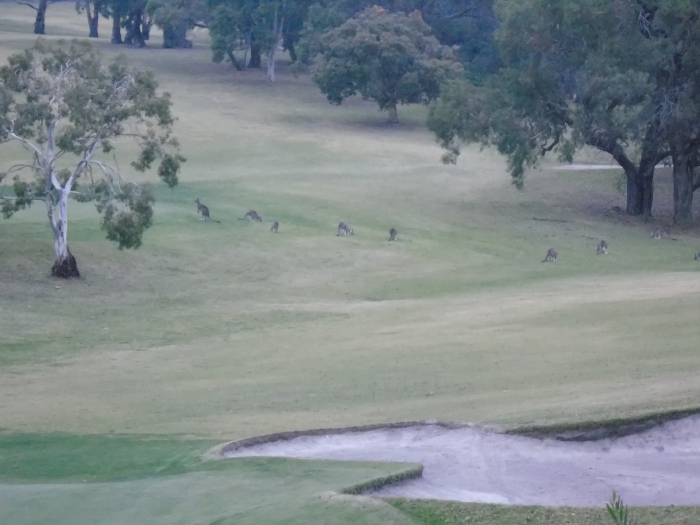
The following morning, we walked to the point in Anglesey then drove to Split Point lighthouse in Aireys Inlet. The lighthouse is most well known for being where 1980’s/90’s children’s program “Round the Twist” was filmed. Ever since we started planning our trip to Australia Mike made it clear that this was high on his list of places to visit! Thankfully he wasn’t disappointed, and we enjoyed a leisurely walk around the cliffs near the lighthouse.
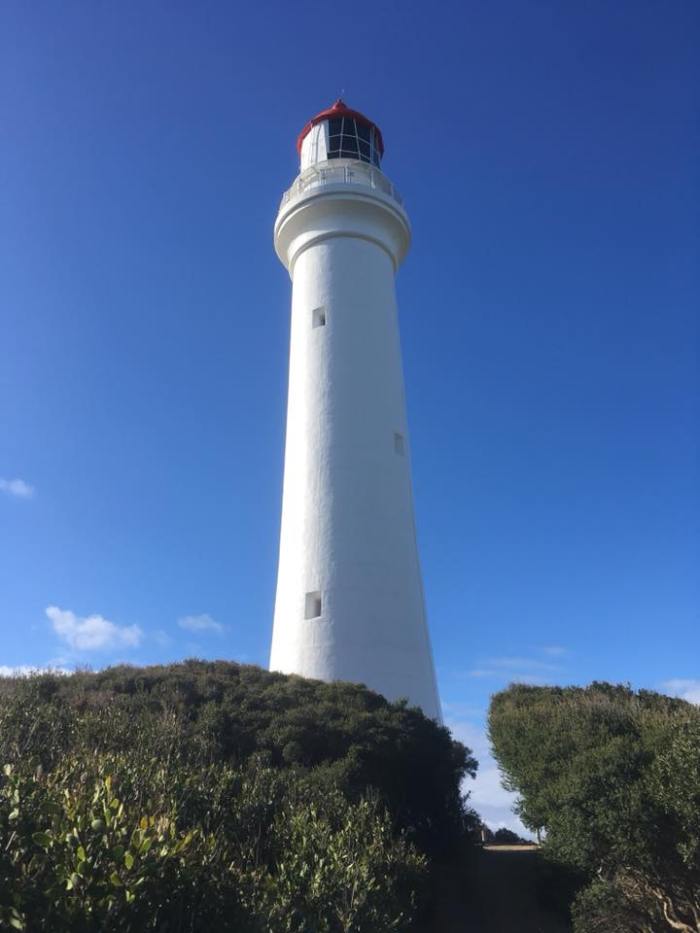
Our next destination was Lorne, a small seaside town on Loutit Bay. After an enjoyable walk along the beach we drove to Grey River Road in nearby Kennet River for our first viewing of wild koalas. Unfortunately, this is a regular stop for tour groups and we were disappointed to find bus loads of noisy people feeding the birds as they looked for koalas in the trees. Although we did see some koalas this was not one of our favourite spots and we were dismayed that the guides were encouraging their tour groups to feed the wild birds.
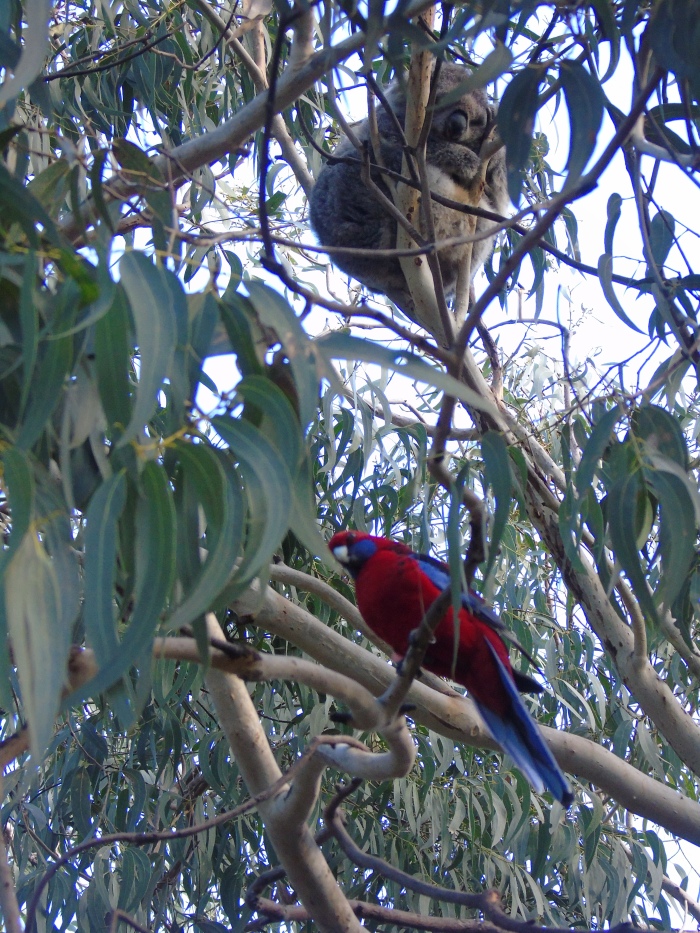
We spent our penultimate night in Apollo Bay where we drove to Mariners Lookout for a short walk. This is an area renowned for the Southern Right Whales that visit the area in winter to breed and give birth. Unfortunately, we didn’t see any whales, so we continued to Maits Rest to complete the rainforest walk, which we thoroughly recommend. At 800 metres long, it was only a short walk, but it was in a lovely secluded location.
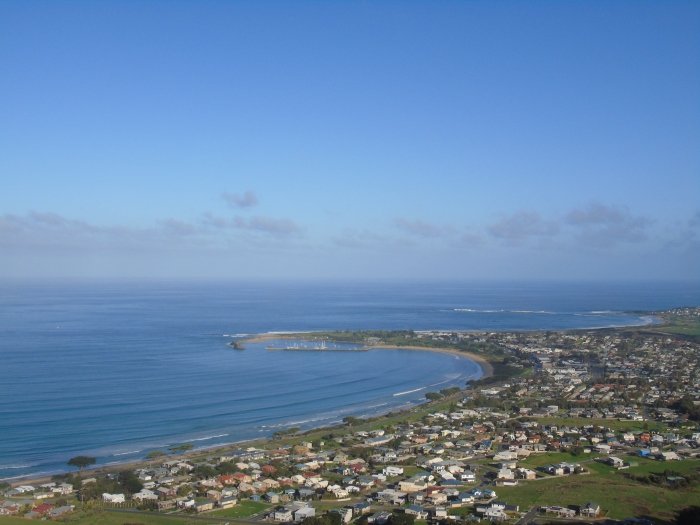
We finished our visit to Apollo Bay with a trip to Cape Otoway Lighthouse, Australia’s oldest working lighthouse. We walked to the lighthouse lookout point which was rather disappointing but by the time we returned to the carpark the lighthouse had closed for the day, so we decided to move on. On our journey back, we decided to stop randomly near some gum trees after a sign for koalas, on the off chance we would spot some. We were more than surprised to find one literally dangling in the tree in front of the car trying to reach some leaves on a lower branch. We stood and watched it for ages, feeling lucky that we stopped where we did. We were even more impressed by the fact that it was active as normally koalas sleep between 16 and 20 hours a day.
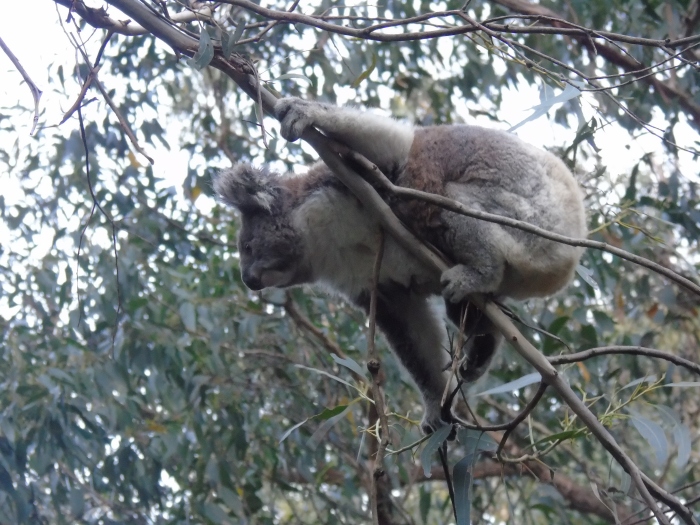
On our final day we drove to Warnambool, which marks the end of the Great Ocean Road. Here we had a very enjoyable walk from our motel to the Whale Nursery at Logans Beach. Unfortunately, no whales were spotted but it was a lovely walk along the ocean front.


